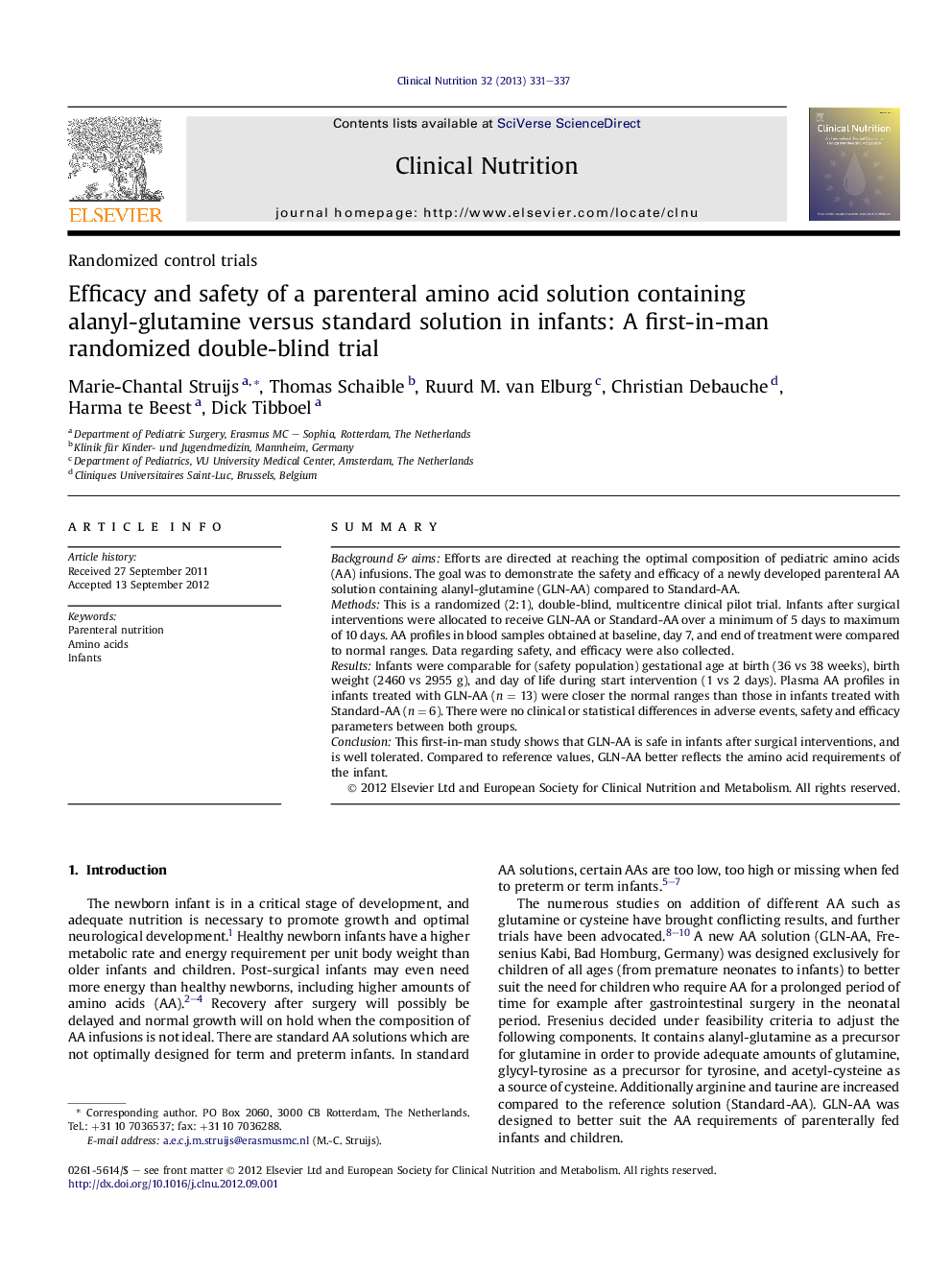| Article ID | Journal | Published Year | Pages | File Type |
|---|---|---|---|---|
| 2686811 | Clinical Nutrition | 2013 | 7 Pages |
SummaryBackground & aimsEfforts are directed at reaching the optimal composition of pediatric amino acids (AA) infusions. The goal was to demonstrate the safety and efficacy of a newly developed parenteral AA solution containing alanyl-glutamine (GLN-AA) compared to Standard-AA.MethodsThis is a randomized (2:1), double-blind, multicentre clinical pilot trial. Infants after surgical interventions were allocated to receive GLN-AA or Standard-AA over a minimum of 5 days to maximum of 10 days. AA profiles in blood samples obtained at baseline, day 7, and end of treatment were compared to normal ranges. Data regarding safety, and efficacy were also collected.ResultsInfants were comparable for (safety population) gestational age at birth (36 vs 38 weeks), birth weight (2460 vs 2955 g), and day of life during start intervention (1 vs 2 days). Plasma AA profiles in infants treated with GLN-AA (n = 13) were closer the normal ranges than those in infants treated with Standard-AA (n = 6). There were no clinical or statistical differences in adverse events, safety and efficacy parameters between both groups.ConclusionThis first-in-man study shows that GLN-AA is safe in infants after surgical interventions, and is well tolerated. Compared to reference values, GLN-AA better reflects the amino acid requirements of the infant.
